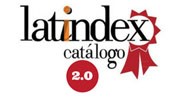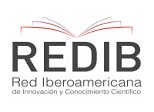Gender Digital Gap Among Pucese Students
DOI:
https://doi.org/10.69890/hallazgos21.v3i3.311Keywords:
gender; digital gap; ICT; accessibility; digital competences.Abstract
The impact that information and communication technologies (ICTs) currently have is one more edge in the differences between women and men, manifested in the inequality of skills, use, content and valuation of these resources, which affects society, attempting against a better quality of life and social welfare of the population. This research addresses, from a gender perspective, the digital gap between students of the Pontifical Catholic University of Ecuador, Esmeraldas Campus (PUCESE) enrolled in the first half of the 2015 academic year, with the aim of knowing the relationships and correlations that exist based on gender and motivating elements of ICT among students, with a quantitative approach, to analyze the results of a survey of perception and knowledge of the study population, considering that it is precisely those who have previously benefited from the programs and projects that from the central and provincial governments seek to mitigate the existing digital gap. Despite the use of tools such as the SPSS platform, it has been difficult to find significant differences in a population with sociodemographic, cultural, technological, academic, and even similar knowledge in regards to gender, considering that in order to gain access to university, they must complete a leveling course that includes digital skills; However, it has been enriching to find that there are marked differences in some of the edges, and these constitute a baseline for further research.
References
Anderson, D. R., Sweeney, D. J., & Williams, T. A. (2008). Estadìstica para administración y economía (Decima ed.). (M. d. Roa, Trad.) CDMX, México: Cengage Learning Editores, S.A de CV. Recuperado de: <a href= https://www.upg.mx/wp-content/uploads/2015/10/LIBRO-13-Estadistica-para-administracion-y-economia.pdf target="_blank">https://www.upg.mx/wp-content/uploads/2015/10/LIBRO-13-Estadistica-para-administracion-y-economia.pdf</a>
Bilbao-Osorio, B., Dutta, S., & Lanvin, B. (2014). The Global Information Technology Report 2014. Ginebra: World Economic Forum and INSEAD.
Cabero Almenara, J. (2013). El aprendizaje autorregulado como marco teórico para la aplicación educativa de las comunidades virtuales y los entornos personales de aprendizaje. Revista Teoría de la Educación: Educación y Cultura en la Sociedad de la Información,14 (2), 133-156. Recuperado de <a href=http://campus.usal.es/~revistas_trabajo/index.php/revistatesi/article/view/10217/10626 target="_blank">http://campus.usal.es/~revistas_trabajo/index.php/revistatesi/article/view/10217/10626</a>
Carracedo Verde, J. A. (2002). Jerarquías y desigualdades en la Sociedad de la Información. En Cairo Carou, H. (ed.) Democracia digital. Límites y oportunidades. Madrid: Trotta.
Castaño, C., Martín, J., Vázquez , S., & Añino, S. (2007). Las Tic y la brecha digital de género. Universidad Complutense. Madrid: Observatorio e-igualdad.
Comisión Económica para América Latina y el Caribe (2013). La brecha digital de género: reflejo de la desigualdad social. Notas para la igualdad. Observatorio de Igualdad de Género de América Latina y el Caribe, (10), 1-2.
De León, J. & Martínez, C. (2006). Disminuyendo la brecha digital, aportación latinoamericana. Ponencia presentada y publicada en Proceedings The International Know How Conference 2006, weaving the information society: a multicultural and gender perspective. México, D.F.
Eurostat. (2016).Culture Statistics. Recuperado de: <a href=http://ec.europa.eu/eurostat/statistics-explained/index.php/Main_Page target="_blank">http://ec.europa.eu/eurostat/statistics-explained/index.php/Main_Page</a>
Garitaonandia, C. (2010). Oportunidades y riesgos para los niños y jóvenes en Internet. Bilbao, Pais Vasco.
Instituto Nacional de Estadisticas y Censos. (2016). Datos y Encuestas. Recuperado de: <a href=http://www.ecuadorencifras.gob.ec/compendio-estadistico-2016 target="_blank">http://www.ecuadorencifras.gob.ec/compendio-estadistico-2016</a>
Unión Internacional de Telecomunicaciones. (2016). Development Index 2015. Recuperado de: <a href=http://www.itu.int/net4/ITU-D/idi/2015/ target="_blank">http://www.itu.int/net4/ITU-D/idi/2015/</a>
Martinez, E. & Serrano, S. (2012). La brecha digital mitos y realidades. México: Universitaria.
Álvarez, P. (2009). La brecha digital, brecha social. Los recursos humanos en el desarrollo y la capacitación a través del aprendizaje digital. Gazeta de Antropología, 123. Recuperado de: <a href=http://www.ugr.es/~pwlac/G24_45Pedro_Maya_Alvarez.html target="_blank">http://www.ugr.es/~pwlac/G24_45Pedro_Maya_Alvarez.html</a>
Negroponte, Nicholas.(1995). El Mundo Digital o Ser Digital (Being Digital),, Barcelona: Ediciones B, S.A, 140.
Prensky, M. (2001). Digital Natives, Digital Immigrants. On the Horizon, 9(5), 6.
Sandoval, R. (2006). Explorando la brecha digital en México: Diagnóstico del proyecto e-México en el Estado de México. Redalyc, 292-306.
Serrano, A., & Martínez, E. (2003). La brecha digital, mitos y realidades. México: Universidad Autónoma de California.
Sunkel, G. & Trucco, D. (2010). Nuevas tecnologías de la información y la comunicación para la educación en América Latina: riesgos y oportunidades. Chile: CEPAL.
Tello, E. (2014). La brecha digital: índices de desarrollo de las Tecnologías de la Información y las Comunicaciones en. (I. d. Tecnológica, Ed.) Redalyc, 45(1), 43-50.
Tussie, D., & Casabur, G. (2011). Los nuevos bloques comerciales: a la búsqueda de un fundamento perdido. Revista de Ciencias sociales de Buenos Aires, 18-26.
Vazquéz, S. (2010). Aproximación cualitativa: Profesoras, educación y nuevas tecnologías. Proyecto e-igualdad Financiado por el Instituto de la Mujer. Recuperado de: formacion.educalab.es/pluginfile.php/42089/mod_imscp/.../1/ProfesorasTIC.pdf
World Economic Forum. (2014). Global Information Technology Report. New York: Readiness for the Networked World.
Downloads
Published
How to Cite
Issue
Section
License
Los artículos enviados a la Revista Científica Hallazgos21 deberán ser totalmente originales e inéditos.
Los autores son los responsables de los textos y las imágenes incluidas en los artículos y no necesariamente reflejan el pensamiento de la editorial o de la Pontificia Universidad Católica del Ecuador, Sede Esmeraldas (PUCESE).
Los autores disponen cederle a la Revista Científica Hallazgos21 todos los derechos inherentes para la edición, publicación y distribución o divulgación del mismo.
Se autoriza a las revistas firmantes de los acuerdos de Encuentros de Revistas Latinoamericanas para reproducir en parte o totalmente los artículos con la sola mención de la fuente claramente señalada.







